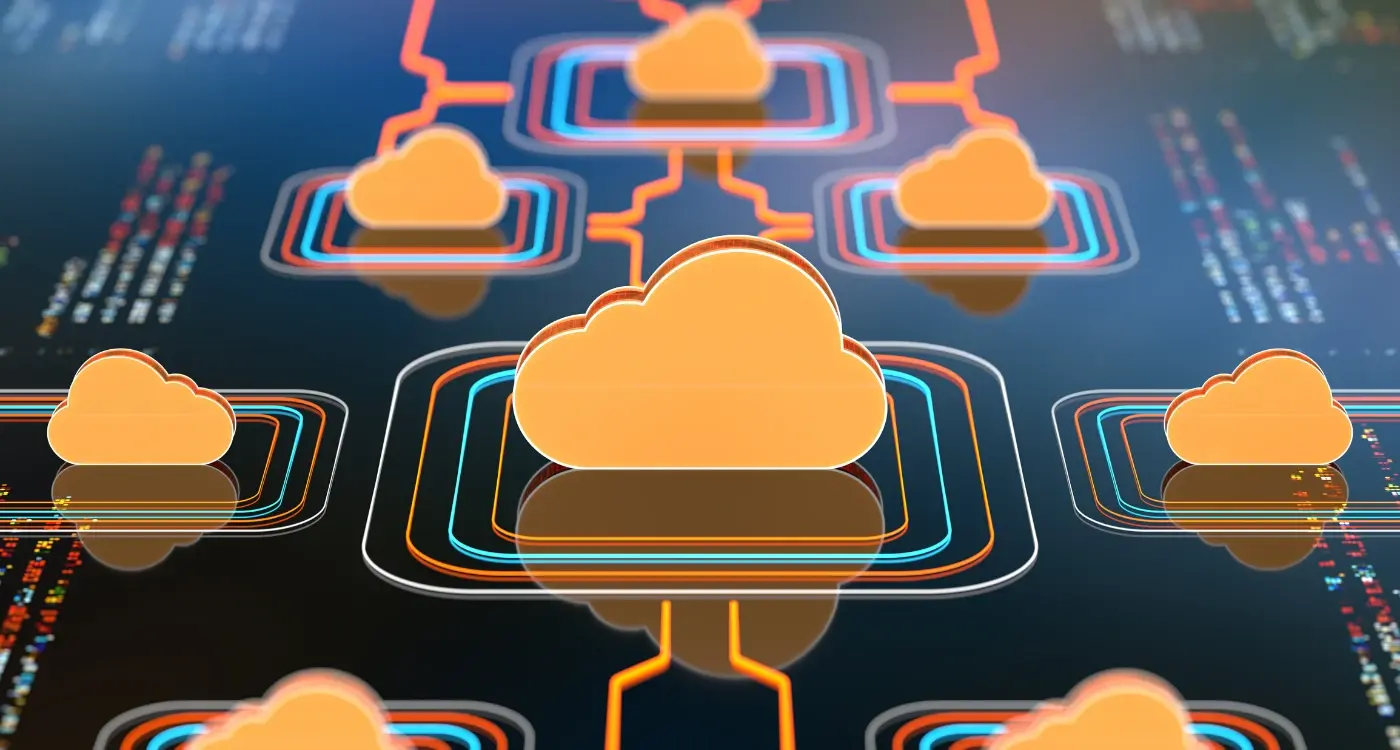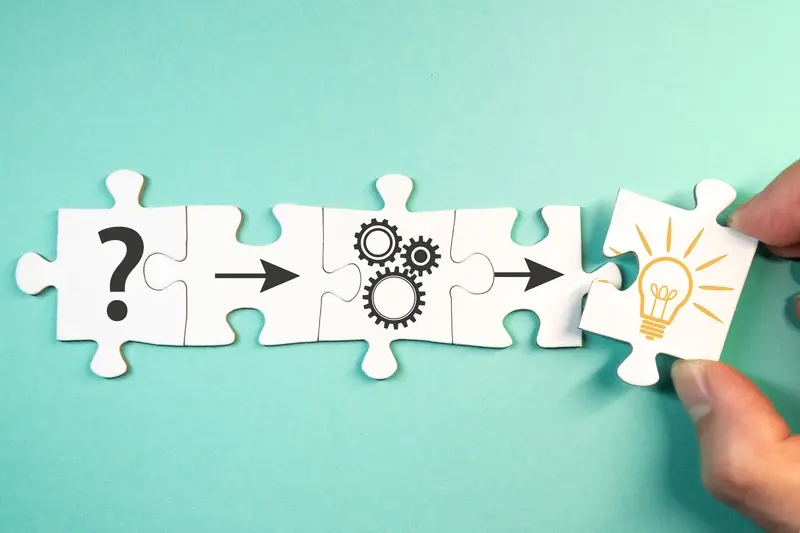What's the Difference Between Android and Apple Watch App Development?
You've got a brilliant idea for a smartwatch app, but there's one problem that's keeping you stuck. Should you build it for Apple Watch or Android wearables? Maybe both? The choice feels overwhelming—and frankly, most of the advice out there makes it sound more complicated than rocket science.
Here's the thing: Apple Watch and Android wearable development aren't just different platforms; they're completely different worlds. The programming languages are different, the design rules are different, and even the way people use these devices varies massively between the two ecosystems. What works brilliantly on one platform might fall flat on the other.
I've been building wearable apps since wearable technology first started impacting the mobile industry, and I still see developers making the same mistakes. They assume that wearable development is just like mobile app development but smaller. Wrong. Or they think they can easily port their iPhone app to Apple Watch with minimal changes. Also wrong.
The biggest mistake developers make is treating smartwatch development like mobile development with a tiny screen
This guide will walk you through everything you need to know about the key differences between Apple Watch and Android wearable development. We'll cover the technical stuff—operating systems, programming languages, development tools—but also the practical considerations like cost, timeline, and which platform might suit your specific project better. By the end, you'll have a clear understanding of both platforms and can make an informed decision about where to invest your time and budget.
Understanding Watch Operating Systems
When you're developing apps for smartwatches, you're working with two main operating systems—watchOS for Apple Watch and Wear OS for Android-compatible smartwatches. These systems might seem similar at first glance, but they work quite differently under the hood.
Apple's watchOS is a closed ecosystem that only runs on Apple Watch devices. It's built specifically for Apple's hardware, which means it can be optimised perfectly for those devices. The system handles everything from health monitoring to app management, and it's designed to work seamlessly with iPhones—you can't actually use an Apple Watch without one.
Key Differences in System Architecture
Wear OS, Google's smartwatch platform, takes a different approach. It's an open system that runs on watches made by various manufacturers like Samsung, Fossil, and TicWatch. This means your app needs to work across different screen sizes, processors, and hardware configurations—something you don't worry about with watchOS.
The way these systems handle apps is quite different too. Apple Watch apps can run independently on the watch itself, but they often rely on a companion iPhone app for complex processing. Wear OS apps can be completely standalone or work alongside Android phone apps, giving developers more flexibility in how they structure their applications.
System Capabilities and Restrictions
Both systems have strict rules about what apps can do. Battery life is precious on these tiny devices, so both watchOS and Wear OS limit background processing and push developers towards lightweight, focused experiences.
- watchOS apps must be lightweight and responsive, with limited background execution
- Wear OS apps can run more independently but still face battery and performance constraints
- Both systems prioritise quick interactions and glanceable information
- Security restrictions prevent apps from accessing certain hardware features without permission
Development Tools and Programming Languages
When it comes to building apps for smartwatches, Apple Watch and Android watches require completely different development approaches. Think of it like speaking two different languages—what works for one platform won't work for the other.
Apple Watch development relies on Swift or Objective-C programming languages, using Xcode as your main development tool. Swift is the newer language that Apple prefers, and honestly, it's much easier to learn if you're starting fresh. Xcode comes with everything you need built-in, including simulators to test your app without needing the actual watch on your wrist. The development process is streamlined because Apple controls both the hardware and software.
Android Wear Development Stack
Android watches use a different setup entirely. You'll need Android Studio as your main tool, writing code in Java or Kotlin. Kotlin has become Google's preferred language for Android development, much like Swift for Apple. The tricky bit with Android is that there are different watch manufacturers—Samsung, Fossil, TAG Heuer—and they might have slightly different features or screen sizes to account for.
Start with the platform you're most familiar with, then expand to the other. Learning both simultaneously can be overwhelming and slow down your development process.
Key Development Differences
| Platform | Primary Language | Development Tool | Testing Method |
|---|---|---|---|
| Apple Watch | Swift/Objective-C | Xcode | Built-in simulator |
| Android Wear | Kotlin/Java | Android Studio | Emulator or device |
Both platforms offer excellent documentation and learning resources, but Apple's approach tends to be more beginner-friendly. The wearable development process for either platform requires understanding the unique constraints of small screens and limited battery life.
User Interface Design Differences
When you're designing for smartwatches, space is your biggest enemy. Apple Watch gives you a tiny 44mm screen to work with at most, whilst Android Wear devices vary wildly—some are round, some are square, and they all have different pixel densities. This creates a real headache for developers who want their apps to look good across multiple devices.
Apple keeps things simple with their interface guidelines. They use a crown and side button system that works brilliantly for navigation, plus their haptic feedback is top-notch. You get clear rules about how buttons should behave, how text should scale, and where elements should sit on screen. The Apple Watch interface feels consistent because Apple controls everything—the hardware, the software, and the design rules.
Navigation Patterns
Android Wear takes a different approach. Google's Material Design adapts to different screen shapes and sizes, but this flexibility comes at a cost. You might design something that looks perfect on a square Samsung Galaxy Watch, only to find it's completely broken on a round Fossil smartwatch. The navigation relies heavily on swipe gestures and voice commands, which can feel less precise than Apple's physical controls.
Design Constraints
Both platforms force you to think differently about user interaction. Forget complex menus and detailed forms—everything needs to be achievable in seconds. Apple pushes you towards their Digital Crown for scrolling and zooming, whilst Android encourages more touch-based interactions. The key difference is that Apple's approach feels more standardised, whereas Android gives you more freedom but requires much more testing across different devices.
App Distribution and Store Policies
Getting your wearable app into users' hands means dealing with two very different approval processes. Apple's App Store has strict guidelines for Apple Watch apps—they review everything from your app's performance to whether it actually makes sense on a tiny wrist screen. The review process can take anywhere from 24 hours to several days, and Apple isn't shy about rejecting apps that don't meet their standards.
Google Play takes a more relaxed approach with Wear OS apps. Their automated scanning system flags obvious problems, but the human review process is generally faster and less strict than Apple's. That said, don't think you can get away with a poor-quality app—Google still has standards, they're just applied differently.
Platform-Specific Requirements
Apple requires your watch app to have a companion iPhone app; you cannot distribute a standalone Apple Watch app through the App Store. This companion app doesn't need to do much, but it must exist. Wear OS apps, on the other hand, can be completely independent—though most developers still create phone companions for better functionality.
The biggest mistake developers make is assuming their phone app will automatically work well on a watch—the platforms have completely different user expectations and technical limitations
Submission Tips
Both platforms want to see that your app genuinely benefits from being on a wearable device. Simply shrinking down your phone app won't cut it. Apple particularly scrutinises whether your watch app offers quick, glanceable interactions that make sense for wrist-based computing. Google focuses more on technical performance and security, but they're increasingly looking at user experience quality too.
The approval timeline varies significantly between updates and new submissions—plan accordingly when launching your wearable development project.
Performance and Hardware Limitations
When you're developing apps for smartwatches, you're working with some serious constraints that don't exist in smartphone development. Think of it this way—your Apple Watch has about as much processing power as a phone from several years ago, and that Wear OS device? Well, it's in a similar boat.
The biggest challenge you'll face is battery life. Smartwatches need to last all day, which means your app can't be a power hog. Apple Watch apps get terminated quite aggressively if they use too much CPU or memory; Wear OS devices have similar limitations but handle background processing slightly differently. You'll need to design your apps to work in short bursts rather than running continuously.
Memory and Processing Power
RAM is extremely limited on both platforms. We're talking about 1GB or less in most cases, and your app needs to share that with the operating system and other running apps. Complex animations, large images, or heavy data processing will cause your app to crash or perform poorly.
Hardware Differences
Here's where things get interesting. Apple controls their hardware completely, so you know exactly what you're working with. Android watches come from different manufacturers with varying specifications:
- Different screen sizes and resolutions
- Varying amounts of RAM and storage
- Different sensors available
- Inconsistent performance across devices
- Some have rotating crowns, others don't
This means Android watch development requires more testing across different devices, whilst Apple Watch development lets you focus on fewer hardware variations. Both platforms require you to think small, work fast, and respect the battery—but Android development adds the complexity of multiple hardware configurations to consider.
Development Cost and Time Considerations
When clients ask me about building wearable apps, the conversation inevitably turns to budget and timelines. The truth is, developing for Apple Watch versus Android smartwatches can have quite different cost implications—and it's not always what you'd expect.
Apple Watch development typically takes longer upfront because of the strict design guidelines and performance requirements. You'll spend more time getting the user interface just right, making sure everything responds quickly, and ensuring your app passes Apple's review process. This means higher development costs initially, but there's a silver lining: you're building for a more standardised platform with consistent hardware specs.
Android's Complexity Challenge
Android wearable development presents a different challenge altogether. Whilst the initial development might seem faster, you'll face the reality of device fragmentation. Different screen sizes, varying performance capabilities, and multiple manufacturers mean more testing time. More testing equals more development hours, which translates to higher costs down the line.
The good news? Both platforms have matured significantly, so development tools are better than ever. Most projects take anywhere from 6-12 weeks for a basic wearable app, depending on complexity. Factor in testing time—especially for Android—and you're looking at realistic timelines.
Budget Planning Reality
Here's what affects your budget most: the complexity of your app's features, not necessarily the platform choice. Simple notification-based apps cost less; apps requiring sensors, data processing, or complex interactions cost more. Both platforms require ongoing maintenance, but Apple Watch apps tend to need fewer updates for device compatibility.
Start with one platform first—preferably the one your target audience uses most. This approach reduces initial costs and lets you validate your concept before expanding to the second platform.
Conclusion
After working on countless smartwatch projects over the years, I can tell you that choosing between Android and Apple Watch development isn't just about personal preference—it's about understanding your audience and project goals. Both platforms offer unique opportunities, but they require different approaches, skills, and budgets.
Apple Watch development tends to be more straightforward if you're already familiar with iOS development. The tools are polished, the design guidelines are clear, and the user base is typically more willing to pay for apps. But that comes with stricter review processes and higher hardware costs for testing. WatchOS apps also need to work seamlessly with iPhones, which limits your potential market.
Android smartwatch development gives you more flexibility and a broader range of devices to target. Wear OS has improved significantly, and you can reach users across different price points. The trade-off? You'll need to handle more device variations, battery life can be trickier to optimise, and monetisation might be more challenging.
The reality is that most successful smartwatch apps start with one platform and expand later. My advice? Pick the platform that matches your target users and your team's existing skills. Don't try to do both simultaneously unless you have a substantial budget and timeline. Focus on creating something brilliant for one platform first—you can always port it later once you've proven the concept works.
Smartwatch development is still evolving rapidly, and both platforms continue to improve their tools and capabilities. The key is to start building and learning, rather than getting stuck in analysis paralysis.
Share this
Subscribe To Our Learning Centre
You May Also Like
These Related Guides

What's the Difference Between Cloud Computing and Edge Computing for Apps?

Can You Really Build A Professional App Without Coding?



